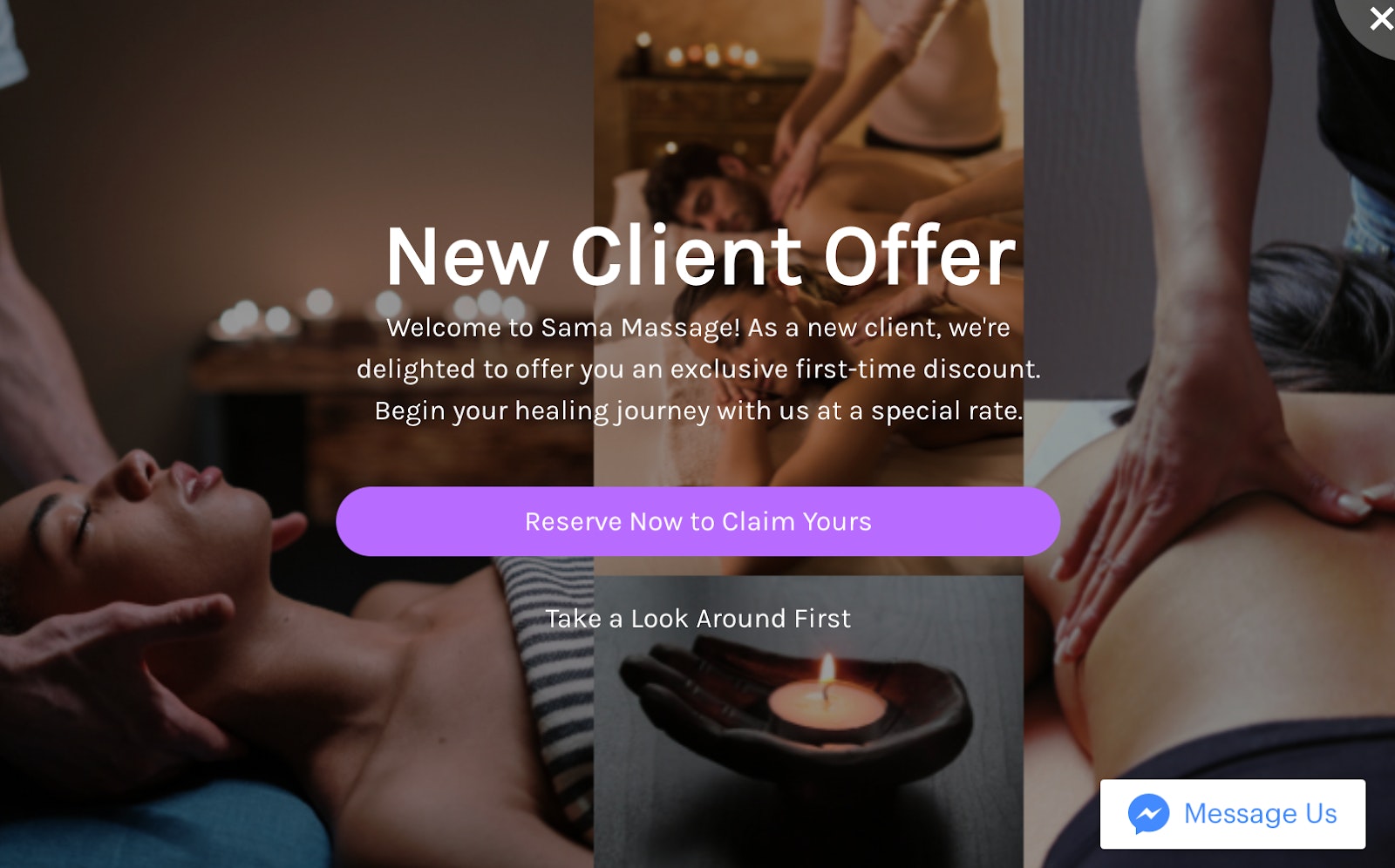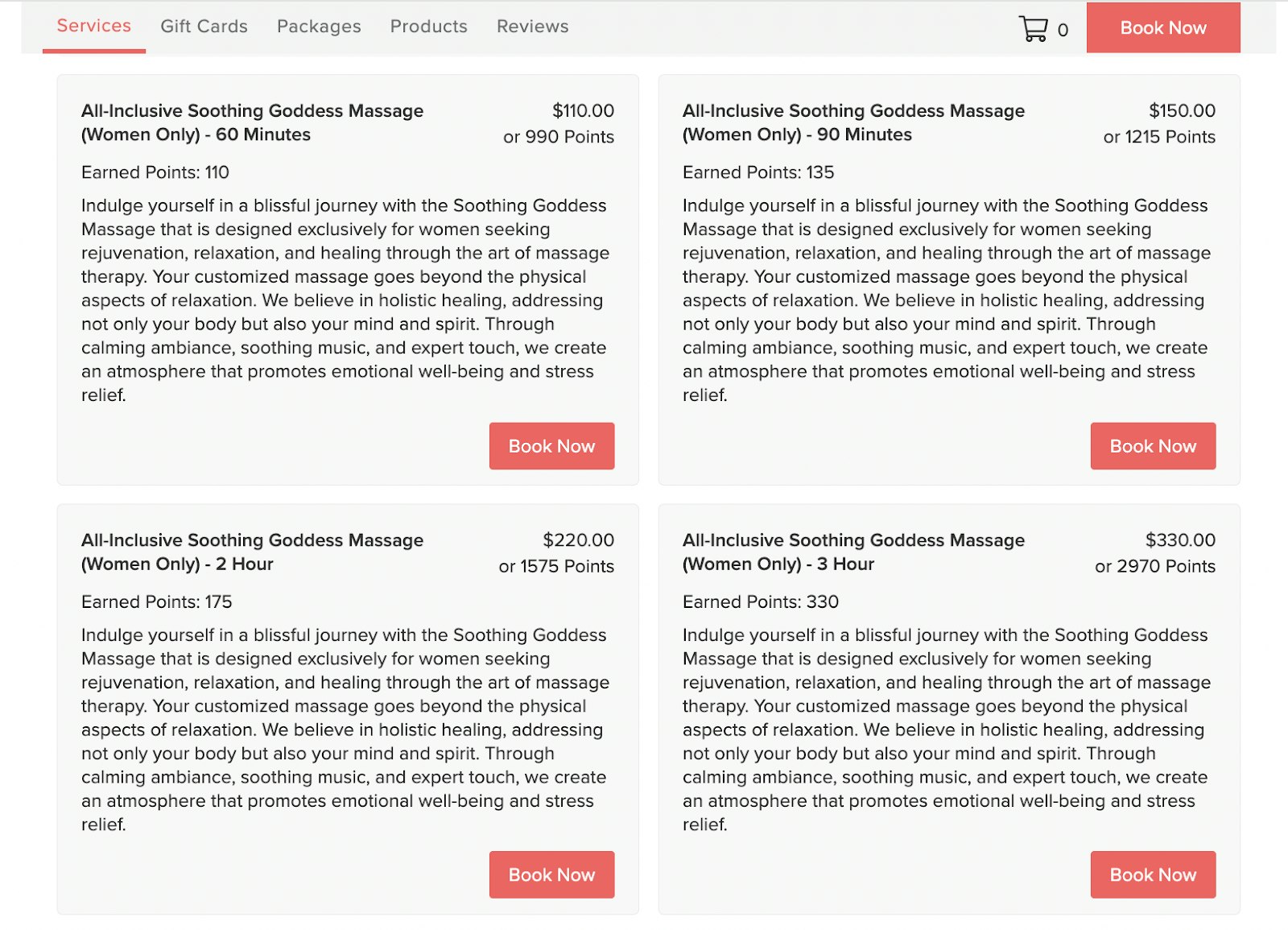How to get more clients: 7 strategies to grow your business

We’ve all heard that customer retention has a higher return on investment (ROI) than customer acquisition. But to focus on keeping clients happy, you first need to have clients to begin with.
When you’re struggling to grow your business, you might be wondering how to ratchet up your strategy so you can get more clients. Whether you’re wondering how to get more clients as a therapist, photographer, lawyer, or personal trainer, our seven strategies are easy to understand and put into action.
Before we get started, let’s review the number one most important thing to do before you implement any client acquisition strategy: know your customers.
Table of contents
Understand your ideal customer
1. Advertise in places your customers spend time
2. Utilize promotions and discounts
3. Obtain current client testimonials
5. Establish a referral program
6. Consider mutually-beneficial partnerships
7. Network and build relationships
Understand your ideal customer
In order to attract more customers, you first need to know who you're selling to. This starts with identifying your target audience.
A target audience is a group of potential customers, including various segments that may benefit from your offering. Usually, you'll look at traits in some or all of these seven categories:
Demographic: Basic characteristics like age, gender, income, education, and occupation
Geographic: Location-based factors such as country, region, or city
Psychographic: Lifestyle, values, interests, and personality traits
Behavioral: Patterns in consumer actions, such as purchasing habits or product usage
Technographic: The technology and devices customers use, including software or platforms
Firmographic (for B2B): Characteristics of businesses, like industry, size, or revenue
Needs-based: Specific customer needs or challenges that your product solves
Imagine you have a therapy practice. You specialize in helping people draw firm boundaries and find time to rest and relax so they can live calmer lives. Through audience segmentation, you learn new things about your audience. You narrow it down by category until you realize this is your target audience:
Demographic: Parents aged 30 to 45 with young children, primarily in dual-income households
Geographic: Families in suburban areas with access to virtual or in-person therapy
Psychographic: Parents who prioritize mental health and want a balance between self-care, family, and work
Behavioral: Parents struggling with parenting stress, anxiety, or relationship dynamics who are seeking family or individual therapy
Technographic: Clients who are comfortable using online therapy platforms and digital appointment tools
Needs-based: Individuals who need emotional support in managing parenting-related challenges
You can narrow your audience down even further with an ideal customer profile (ICP) based on the data you’ve gathered.
For instance, your ICP for a therapy client might be Sarah, a married mom of two young children who works part-time with a combined household income of $100,000 a year. She feels stretched thin by the responsibilities of motherhood, partnership, and work. When you put yourself firmly in Sarah’s shoes, you’ll be able to understand the services your clients need most — not just Sarah, but all of your clients.
How to get more clients
Once you know everything you can about your customers’ needs, wants, and characteristics, it’s time to dive into the good stuff: how to get more clients. Use these 9 tips to get started.
1. Advertise in places your customers spend time
One of the simplest ways to attract more customers is to advertise where they spend their time. Think about the online platforms, physical locations, and communities your potential customers are part of.
These places look different depending on your business. For example, if you're a family therapist, you might want to:
Advertise in mental health forums
Place ads in local health directories
Partner with wellness apps that focus on meditation or mindfulness
List your services on publications like Psychology Today for those seeking mental health support
Photographers, on the other hand, could advertise on visual platforms like Instagram and Pinterest — and sites like The Knot or WeddingWire if they offer wedding photography.
Quick and easy way to get started
Start by identifying two to three places where your ideal clients are most active. For example, if you’re a therapist, look into mental health directories or wellness apps.
Next, research the advertising process on these platforms. Explore what types of ad units are available and what types of offers — such as articles, tips, or free consultations — perform well with the advertiser’s audience.
Lastly, set a small budget and begin running ads to increase visibility. Track which platforms get the most engagement, and focus your efforts there.
2. Utilize promotions and discounts
Offering a discount or promo to first-time clients can be huge, especially for services people haven’t tried before. You'll often see promos like this for massage studios or spas that offer a lower rate for first-time clients.
For instance, in my hometown of Wasilla, AK, Sama Massage Studio provides a $15 to 20 discount for first-time customers.

Body Kneads Spa uses a loyalty program instead. Each time you book a service at the spa, you get points that can be redeemed for a pretty nice discount on a future service.

Another massage provider offers a monthly package that knocks the price of each massage down by $15 to 20. But these massages cost more than the others in my town, even with the package discount.
Here are my two takeaways from my experiences as a client with these three promo and discount models
Promotions work. When they’re designed well, they keep people coming back for more.
Competitor prices matter. If your services cost a lot more than the competition, clients may not bite even with promotions — especially if your services don’t offer anything better or unique.
Quick and easy way to get started
Create a simple promotion that appeals to your ideal client. Real estate agents could offer a free home consultation or reduced commission for a limited time. Bookkeepers could offer a discounted first month of services, while cleaning services might offer 10% off an initial deep clean.
Spread the word about your promotion using social media, email campaigns, and even local community boards. Once it’s live, monitor how many clients it attracts to refine your strategy for future campaigns.
3. Obtain current client testimonials
Positive customer reviews and testimonials can build trust with potential new clients. People are more likely to choose your business when they can see real, positive feedback from other customers.
Showcase success stories and good reviews on your website, social media posts, blogs, and advertisements. Client reviews, testimonials, and case studies showcase how customers benefit from your services. This social proof helps new clients feel confident in their decision to work with you.
For example, here’s the testimonial page for a tree removal service I recently enlisted to cut down two very tall, very dead birch trees on my property. These detailed testimonials gave me a great snapshot of AAA Tree Service.

I also checked review aggregator sites, and when I saw the company had over 20 five-star reviews on Google and Facebook, I booked with them.
My experience was great. They offered an unbeatable price and weren’t pushy, like some of the other tree services I received quotes from. Because I got such a great deal and enjoyed a top-notch, quick, and safe experience, I left AAA Tree Services a glowing review.
Quick and easy way to get started
Reach out to 3 to 5 happy clients and ask if they’d be willing to provide a testimonial. To make it easy, offer to draft a brief statement they can approve or provide a few prompts exploring how your products or services provided value and what the customer liked best about working with your business.
Post these testimonials on your website and share them across your social media channels. For maximum visibility, you could even incorporate them into your email signature or digital marketing materials.
Finally, don't be afraid to follow up. Here's our suggested schedule for nudging customers:
Initial request: Ask for a testimonial or review right after a positive interaction or successful completion of the service. This is when the client is most satisfied and likely to respond.
First follow-up (1 week later): If the client hasn’t responded, send a friendly reminder about the testimonial request. Keep it light and offer to make it easy by providing a draft or a few guiding questions.
Second follow-up (2-3 weeks later): If there’s still no response, send another polite nudge. Reiterate how much their feedback would mean to your business. You might offer a small incentive, like a discount on future services, to encourage participation.
Final follow-up (1 month later): Send a final, gentle reminder letting them know it’s the last time you’ll ask, thanking them for considering it.
The key is to be respectful. Avoid pressuring the client, but make it easy for them to follow through.
4. Leverage social media
These days, almost everyone is on social media. That's why social media platforms are such powerful tools for reaching and engaging with your target audience. When you consistently post valuable content on social media, you:
Strengthen your online presence
Keep your brand at the top of people's minds
Build trust with your audience — especially if you share quotes from customer testimonials, case studies, and reviews
Give potential customers the chance to see the value of your services
Say you're a real estate agent. You could use social media to showcase new listings, market insights, and home-buying tips. Instagram, Facebook, and YouTube are perfect for sharing high-quality photos and virtual property tours. With tools like Instagram Stories and Facebook Live, you could even give behind-the-scenes looks at homes or run Q&A sessions about the buying process.
If you're a bookkeeper, you'd be better served on LinkedIn or Facebook where small businesses and freelancers spend their time. You could post articles or short videos explaining common bookkeeping challenges and tax preparation tips. Remember to include quotes from case studies, testimonials, and reviews, too.
Quick and easy way to get started
Choose your platform: Start with the one or two platforms where your target audience spends the most time.
Create a content calendar: Plan consistent posts for an entire month. Aim for 2-3 posts per week, and include a mix of tips, behind-the-scenes content, and testimonials.
Use visuals: Whether it’s stunning home tours for real estate agents, before-and-after cleaning shots, or infographics about bookkeeping tips, visuals grab attention and are more likely to be shared.
Engage with your audience: Respond to comments and messages quickly, and interact with followers by asking questions or running polls.
Track what works: Use platform insights to track which types of posts perform best. Adjust your strategy based on what your audience finds most engaging.
5. Establish a referral program
A referral program is an effective way to turn your satisfied clients into ambassadors for your business. A strong referral program benefits everyone involved.
For example, say a real estate agent offers a $100 gift card to clients who refer customers and a discount on closing costs for referred buyers. As a result, the real estate agent gains new business, the referrer is rewarded, and the new client saves money.
A marketing incentives platform is an excellent tool to simplify and manage referral programs. You can send digital gift cards or cash rewards directly to clients who refer new business, and track your referral program's performance to understand which clients are your best ambassadors.
Quick and easy way to get started
Set clear rewards: Decide what you’ll offer for successful referrals and make sure your rewards appeal to clients
Promote your program: Share details about your referral program with current clients through email, social media, or in person.
Track and refine: Monitor how many referrals you’re getting and adjust your program if needed. Consider adjusting rewards or tweaking your messaging if participation is lower than expected.
Looking for inspiration? Check out 10 of the best referral programs.
6. Consider mutually-beneficial partnerships
Forming strategic partnerships with businesses that complement yours can be a game-changer for growing your client base. Partnerships allow you to tap into new markets and reach clients who might not have found you otherwise.
Common types of partnerships include:
Client referrals: You and a partner agree to refer clients to one another. A real estate company, for example, could partner with a mortgage broker, interior designer, or home inspector.
Joint promotions: Run promotions that bring business to you and your partner while adding value for customers. A cleaning service could partner with a moving company and offer a joint discount if a client books both services at once.
Bundled services: Collaborate to combine services into one convenient package. A bookkeeper could partner with a tax advisor to offer a Business Essentials Bundle, providing clients with one month of free bookkeeping and a complimentary tax consultation.
Quick and easy way to get started
Reach out to potential partners: Make a list of businesses that serve a similar audience and introduce yourself. Outline how a partnership can benefit both of you and share ideas for how you could work together.
Start with a simple agreement: A simple referral system or joint promotion can be a great way to test the waters and see how well the partnership works.
Launch your joint offer: Develop a campaign to promote your joint offer to customers.
Track results: Measure how many referrals or new clients you receive from the partnership and adjust your approach if needed.
7. Network and build relationships
Relationships are at the heart of everything in business, and building strong ones can help you increase your client base. Networking gives you an opportunity to connect with potential clients, industry peers, and potential partners who can help grow your business.
It also gives you a chance to keep up with changes in your industry and continue learning and growing as a business leader.
Quick and easy way to get started
Join local business groups or online forums: Explore business associations, chambers of commerce, or relevant online groups where your target clients are active.
Attend events regularly: Whether virtual or in-person, make a habit of attending industry events or networking meetings to build connections.
Offer value to your network: Share tips, resources, or helpful advice to position yourself as a valuable contact in your field. You can do this through online forums like Reddit with an AMA or in person through a workshop or session.
Follow up with contacts: After networking events, follow up with the people you meet to stay top-of-mind and nurture the relationship.
Key takeaways
Growing your business requires continuous investment in reaching your ideal customers in the places they spend time. Use these 7 tips to attract new clients:
Advertise where your customers are: Focus on platforms and spaces where your audience already spends time to maximize visibility.
Utilize promotions and discounts: Lower the entry barrier with special offers that persuade potential customers to try your services.
Collect testimonials: Build trust and credibility by showcasing positive reviews and success stories from satisfied customers.
Leverage social media: Use social platforms to engage your audience and demonstrate your expertise through consistent, valuable content.
Establish a referral program: Turn customers into ambassadors by rewarding them for bringing in new clients.
Form mutually beneficial partnerships: Collaborate with complementary businesses to offer bundled services and cross-promote to each other’s customer base.
Network and build relationships: Attend events, join groups, and nurture connections with potential buyers and referral partners to grow your professional network.
Up next: Acquisition marketing strategies to grow your customer base >